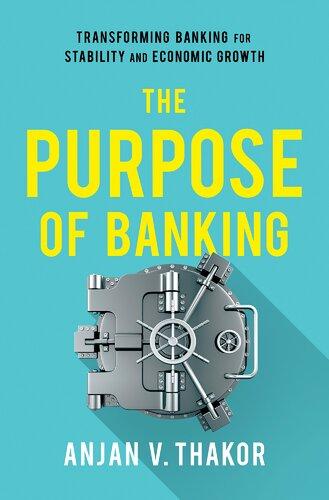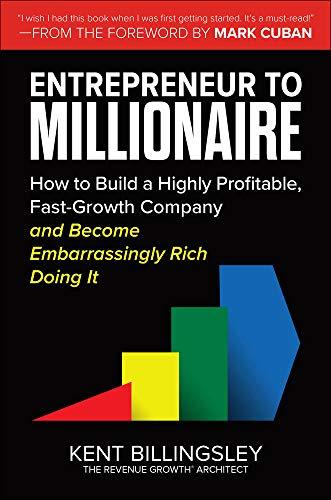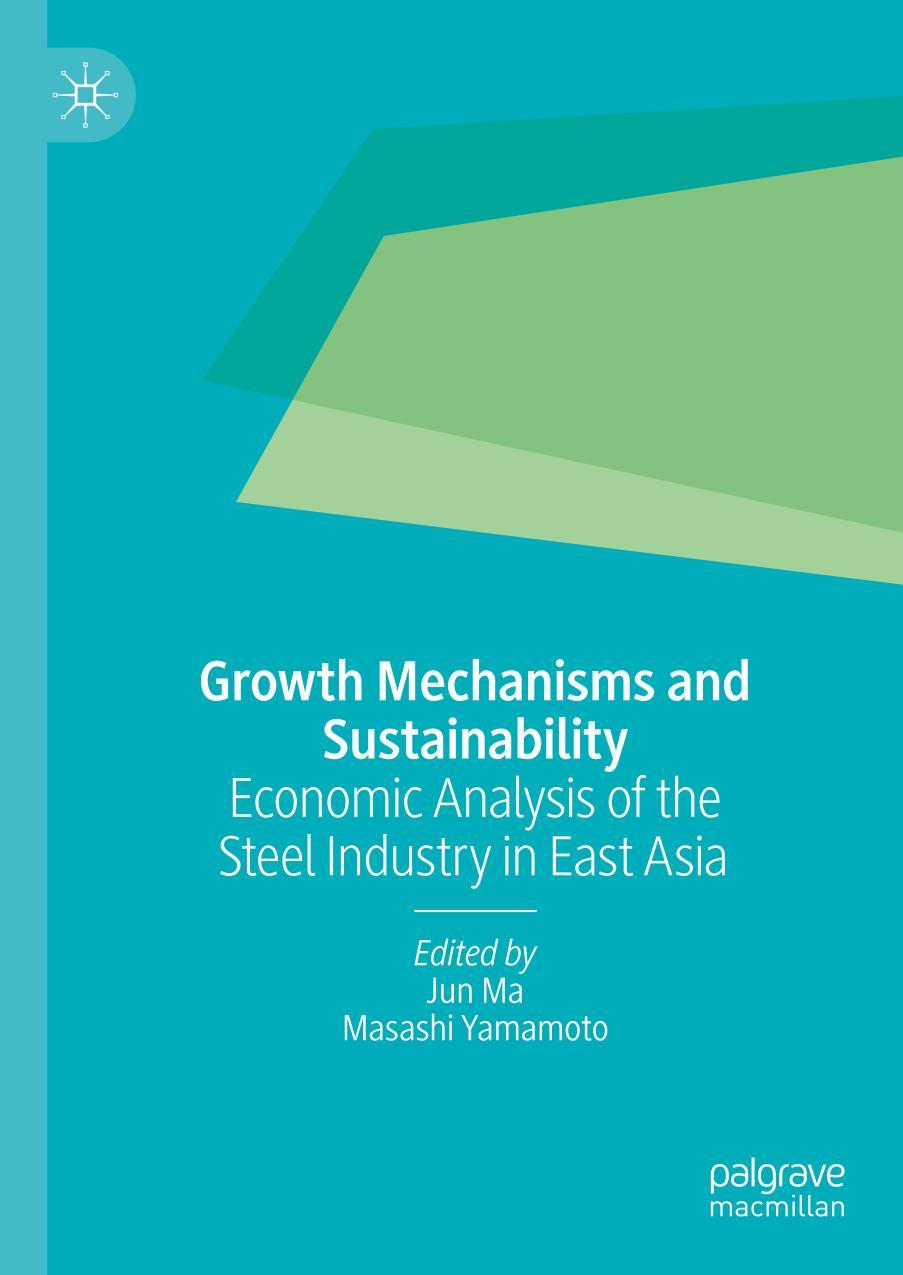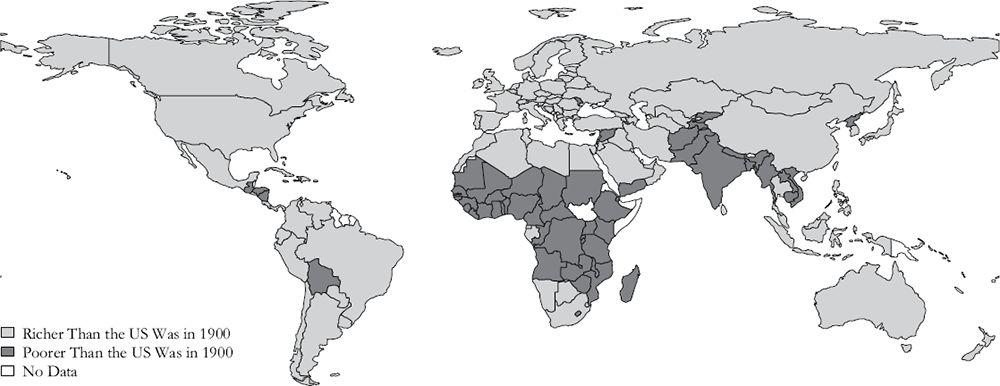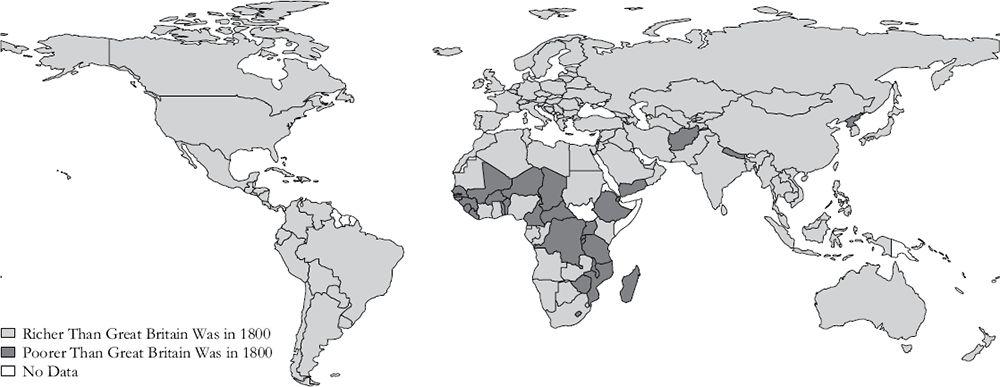How the World Became Rich: The
Origins of
Growth 1st Edition Mark Koyama
Visit to download the full and correct content document: https://ebookmass.com/product/how-the-world-became-rich-the-historical-origins-of-e conomic-growth-1st-edition-mark-koyama/
More products digital (pdf, epub, mobi) instant download maybe you interests ...
How Rich Asians Think: A Think and Grow Rich Publication (Official Publication of the Napoleon Hill Foundation) 1st Edition John C. Shin
https://ebookmass.com/product/how-rich-asians-think-a-think-andgrow-rich-publication-official-publication-of-the-napoleon-hillfoundation-1st-edition-john-c-shin/
Historical Turning Points in Spanish Economic Growth and Development, 1808–2008 1st ed. Edition Concha Betrán
https://ebookmass.com/product/historical-turning-points-inspanish-economic-growth-and-development-1808-2008-1st-ed-editionconcha-betran/
Innovation Commons: The Origin of Economic Growth Jason Potts
https://ebookmass.com/product/innovation-commons-the-origin-ofeconomic-growth-jason-potts/
Seduced by Mrs. Robinson: how The Graduate became the touchstone of a generation First Edition Gray
https://ebookmass.com/product/seduced-by-mrs-robinson-how-thegraduate-became-the-touchstone-of-a-generation-first-editiongray/
Determinants of Economic Growth in Africa 1st ed. Edition Almas Heshmati
https://ebookmass.com/product/determinants-of-economic-growth-inafrica-1st-ed-edition-almas-heshmati/
The Purpose of Banking: Transforming Banking for Stability and Economic Growth 1st Edition Anjan V. Thakor
https://ebookmass.com/product/the-purpose-of-bankingtransforming-banking-for-stability-and-economic-growth-1stedition-anjan-v-thakor/
Europe’s Growth Champion: Insights from the Economic Rise of Poland Marcin Piatkowski
https://ebookmass.com/product/europes-growth-champion-insightsfrom-the-economic-rise-of-poland-marcin-piatkowski/
Entrepreneur to Millionaire: How to Build a Highly Profitable, Fast-Growth Company and Become Embarrassingly Rich Doing It 1st Edition Kent Billingsley
https://ebookmass.com/product/entrepreneur-to-millionaire-how-tobuild-a-highly-profitable-fast-growth-company-and-becomeembarrassingly-rich-doing-it-1st-edition-kent-billingsley/
Growth Mechanisms and Sustainability: Economic Analysis of the Steel Industry in East Asia 1st Edition Jun Ma
https://ebookmass.com/product/growth-mechanisms-andsustainability-economic-analysis-of-the-steel-industry-in-eastasia-1st-edition-jun-ma/
CONTENTS
1. Cover
2. Dedication
3. Title Page
4. Copyright
5. Preface
6. 1 Why, When, and How Did the World Become Rich?
1. What Is Economic Growth?
2. Measuring the Past
3. What Will You Learn from This Book?
4. What This Book Does Not Do
7. Part I Theories of How the World Became Rich
1. 2 Did Some Societies Win the Geography Lottery?
1. Geography and Modern Development
2. Mountains, Coasts, and Climate
3. Geography and Transport Infrastructure
4. Geography and Industrialization
5. Chapter Summary
2. 3 Is It All Just Institutions?
1. What Are Institutions?
2. Property Rights
3. The Legal System
4. Political Institutions
5. More Equal Rights for All
6. Institutions and the Commercial Revolution
7. Between the State and the Market: Guilds
8. Parliaments and Limited Government
9. War and State Finances
10. Chapter Summary
3. 4 Did Culture Make Some Rich and Others Poor?
1. What Is Culture and Why Does It Matter?
2. Can Culture Explain the European Take-off?
3. Does Religion Affect Economic Growth?
4. The Protestant Work Ethic and the “Spirit” of Capitalism
5. If Not a Work Ethic, Why Did Protestant Countries Grow Faster?
6. The Reformation and Religion as a Source of Political Legitimacy
7. Is Islam the Cause of Middle Eastern Economic Stagnation?
8. The Long-Term Persistence of Culture
9. The North–South Italy Divide
10. The Persistence of Trust Norms
11. Gender Norms
12. Chapter Summary
4. 5 Fewer Babies?
1. Malthusian Pressures
2. The Black Death
3. Household Formation and the European Marriage Pattern
4. Did the EMP Spur Economic Growth?
5. Reasons for Skepticism
6. Demographic Change and the Transition to Modern Economic Growth
7. Chapter Summary
5. 6 Was It Just a Matter of Colonization and Exploitation?
1. How Did the Colonizers Benefit?
2. The Slave Trades
3. The Resource Grab
4. Some Silver Linings of Colonialism?
5. Public Goods and Education
6. Missionaries
7. Chapter Summary
8. Part II Why Some Parts of the World Became Rich First, Why Other Parts Followed, and Why Some Are Not There Yet
1. 7 Why Did Northwestern Europe Become Rich First?
1. How Geography Shaped Institutional Development
2. Why Was There No Medieval European Take-off?
3. Divergence within Europe Just before the Take-off
4. Parliaments and the Rise of Limited, Representative Government
5. Chapter Summary
2. 8 Britain’s Industrial Revolution
1. A Consumer Revolution
2. Capitalist Agriculture
3. Do Political Institutions Explain Britain’s Industrialization?
4. Mercantilism and Empire
5. Does the Transatlantic Slave Trade Explain Britain’s Industrialization?
6. Was It Cotton?
7. Was It Market Size?
8. How About State Capacity?
9. Maybe It Was Skilled Mechanical Workers?
10. An Innovative Economy
11. High Wages and Induced Innovation
12. An Enlightened Economy
13. Chapter Summary
3. 9 The Rise of the Modern Economy
1. The Fruits of Industrialization
2. The Second Industrial Revolution
3. The Demographic Transition
4. The Uneven Diffusion of Modern Economic Growth
5. How the US Became Rich
6. The Soviet Detour
7. Chapter Summary
4. 10 Industrialization and the World It Created
1. Delayed Catch-up: The Shadow of Colonization (and Other Factors)
2. How Japan Became Rich
3. How the East Asian Tigers Became Rich
4. How China Is Becoming Rich
5. Chapter Summary
5. 11 The World Is Rich
9. References
10. Index
11. End User License Agreement
List of Tables
1. Chapter 4
1. Table 4.1 Most populous cities in Western Eurasia, 800 CE
2. Chapter 5
1. Table 5.1 Black Death mortality by country
3. Chapter 6
1. Table 6.1 English crop yields, 18th century
4. Chapter 7
1. Table 7.1 British borrowing and interest rates, 1693–1739
5. Chapter 8
1. Table 8.1 Most populous English cities excluding London (with populations of at least 10,0…
6. Chapter 9
1. Table 9.1 Major inventions of the Second Industrial Revolution
List of Illustrations
1. Chapter 1
1. Figure 1.1 Countries that were richer in 2018 (annual per capita income) than the US in 190…
2. Figure 1.2 Countries that were richer in 2018 (annual per capita income) than Great Britain…
3. Figure 1.3 People living in extreme poverty, 1820–2015
4. Figure 1.4 Year that per capita GDP exceeded $10 per day (2018 USD)
5. Figure 1.5 Yearly per capita income for selected regions, 1 CE–present
6. Figure 1.6 US GDP per capita, 1720–2018 (2018 USD)
7. Figure 1.7 Ruggedness and income in African and non-African countries
8. Figure 1.8 The reversal of fortunes within formerly colonized nations, 1500–1995
2. Chapter 2
1. Figure 2.1 Coastlines of African countries
2. Figure 2.2 Africa’s “malaria belt”
3. Figure 2.3 Verticality and horizontality of the continents
4. Figure 2.4 Technology adoption levels in 1500 (% of frontier technologies adopted)
5. Figure 2.5 Temperature deviations across Europe, 1100–1800
6. Figure 2.6 The Roman road network
7. Figure 2.7 The increase in turnpikes in England and Wales: 1680–1830
8. Figure 2.8 Changes in US market access, 1870–90
9. Figure 2.9 Location of cities in England and France in the Roman and medieval periods
10. Figure 2.10 The price of energy in the early 1700s
3. Chapter 3
1. Figure 3.1 Rule of law vs. per capita GDP
2. Figure 3.2 Night lights on the Korean Peninsula
3. Figure 3.3 Rule of law index, 2017
4. Figure 3.4 The first(?) formal legal system: the Code of Hammurabi
5. Figure 3.5 Legal origins throughout the world
6. Figure 3.6 Polity score, 2017
7. Figure 3.7 Democracy score, 2017
8. Figure 3.8 Parliamentary activity in Europe, 1100–1800
9. Figure 3.9 Tax revenues per capita for six European powers, 1500–1900
10. Figure 3.10 Interest rates in city-states and territorial states, 1200–1800
4. Chapter 4
1. Figure 4.1 Subcultures of the US
2. Figure 4.2 Percentage Protestant, Catholic, and Muslim vs. per capita GDP
3. Figure 4.3 Percentage of Protestants vs. school enrollment rate in early 19th-century Pruss…
4. Figure 4.4 Ruler duration in Western Europe and the Islamic world
5. Figure 4.5 The north–south Italy divide: cousin marriage, trust, and judicial efficiency
6. Figure 4.6 The relationship between trust and per capita GDP
7. Figure 4.7 Traditional plow use, female labor force participation, and female firm ownershi…
5. Chapter 5
1. Figure 5.1 Life expectancy around the world, 2015
2. Figure 5.2 The Malthusian model
3. Figure 5.3 The Malthusian model: illustrating the effects of reducing the birth rate
4. Figure 5.4 Black Death mortality rates (%) in 1347–52
5. Figure 5.5 Population and wages in England, 1209–1750
6. Figure 5.6 Fertility and female age of marriage in England, 1590s–1830s
6. Chapter 6
1. Figure 6.1 Countries colonized by Great Britain, France, Spain, Portugal, the Netherlands, …
2. Figure 6.2 Number of slaves in the transatlantic slave trade by carrier
3. Figure 6.3 Number of slaves taken in the slave trades
4. Figure 6.4 The relationship between slaves exported and economic indicators
5. Figure 6.5 Africa’s ethnic boundaries prior to colonization
6. Figure 6.6 Settler mortality, institutions, and long-run development
7. Figure 6.7 Agricultural investment in India
8. Figure 6.8 Ethnic partitioning and the “scramble for Africa”
9. Figure 6.9 The Indian railroad network, 1930
10. Figure 6.10 Modern literacy and proximity to Jesuit missions in Argentina, Brazil, and Parag…
7. Chapter 7
1. Figure 7.1 The steppe and state formation in China and Europe
2. Figure 7.2 Real per capita GDP, 1450–1700, select countries
8. Chapter 8
1. Figure 8.1 GDP, GDP per capita, and population in England/Britain, 1270–1870 (1700 = 100)
2. Figure 8.2 England and its largest cities, 1520–1801
3. Figure 8.3 The spinning jenny
4. Figure 8.4 Arkwright’s water frame
5. Figure 8.5 Crompton’s spinning mule
6. Figure 8.6 Schematic of the Newcomen steam engine
7. Figure 8.7 The Watt steam engine
8. Figure 8.8 Number of letters in Voltaire’s correspondence in the Republic of Letters…
9. Chapter 9
1. Figure 9.1 GDP per capita and real wages in England/Great Britain, 1270–1870 (1700 = 100)
2. Figure 9.2 Fertility and mortality in England, 1541–1839
3. Figure 9.3 Children born per woman in Western Europe and the US, 1800–2000
4. Figure 9.4 Human capital and the demographic transition in England, 1730–1890
5. Figure 9.5 Shares of world industrial output, 1750–1938
6. Figure 9.6 US population and immigrant share, 1850–2010
10. Chapter 10
1. Figure 10.1 Per capita GDP in select Asian countries, 1960–2019
2. Figure 10.2 Percentage of Indians living in extreme poverty, 1977–2011
3. Figure 10.3 Per capita GDP in England/Great Britain and Japan, 1280–1850
4. Figure 10.4 Per capita GDP in South Korea and Nigeria, 1960–2019
5. Figure 10.5 Per capita GDP in various parts of the world, 1960–2019
6. Figure 10.6 Chinese per capita GDP, 1960–2019
Dedication
Mark: For Desiree.
Jared: To my father, Thom, and the memory of my mother, Linda.
The Historical Origins of Economic Growth
Mark Koyama
Jared Rubin
polity
Copyright © Mark Koyama and Jared Rubin 2022
The right of Mark Koyama and Jared Rubin to be identified as Author of this Work has been asserted in accordance with the UK Copyright, Designs and Patents Act 1988.
First published in 2022 by Polity Press Polity Press 65 Bridge Street Cambridge CB2 1UR, UK Polity Press 101 Station Landing Suite 300 Medford, MA 02155, USA
All rights reserved. Except for the quotation of short passages for the purpose of criticism and review, no part of this publication may be reproduced, stored in a retrieval system or transmitted, in any form or by any means, electronic, mechanical, photocopying, recording or otherwise, without the prior permission of the publisher.
ISBN-13: 978-1-5095-4024-2
A catalogue record for this book is available from the British Library Library of Congress Control Number: 2021944393
The publisher has used its best endeavours to ensure that the URLs for external websites referred to in this book are correct and active at the time of going to press. However, the publisher has no responsibility for the websites and can make no guarantee that a site will remain live or that the content is or will remain appropriate.
Every effort has been made to trace all copyright holders, but if any have been overlooked the publisher will be pleased to include any necessary credits in any subsequent reprint or edition.
For further information on Polity, visit our website: politybooks.com
Preface
The world is rich, although it may not always seem like it. Poverty is still all too prevalent. Approximately one billion people around the world barely have enough to survive. The fate of millions of people living in poverty and violence in places like Venezuela, Syria, Burundi, or the Democratic Republic of Congo is deplorable. Even in the developed world, poverty is far, far too common.
Yet, by historical standards, the world is very rich. Most people are much better off than their ancestors were. In fact, most people living right now are better off than almost every person who ever lived prior to two centuries ago (save a very small fraction of elites who lived in luxury … or what was considered luxury at the time). As the world has become richer in the 20th and 21st centuries, more and more people have been lifted out of poverty. And there is good reason to hope that, within our lifetimes, a significant fraction of the remaining poverty around the world will be eliminated.
How did the world become rich? This is the question this book attempts to answer. It is by no means easy to do so. In fact, there is almost certainly no one correct answer! Yet, it remains perhaps the biggest question in the social sciences. A proper understanding of why certain parts of the world have become rich – and others have not (yet) – can help us tackle some of the biggest problems facing us in the present. As you read this book, it will soon become clear that there is no panacea to lift a country into riches. However, there are many factors that historically tend to be present alongside sustained economic growth. It is our goal to both highlight these factors and provide insight into when they do and do not contribute to growth.
Throughout this book, we draw on an immense and fast-growing scholarship in global economic history. The first half of our book is mostly meant to be an overview of what we consider to be the leading theories for how the world became rich. Our debts to this scholarship are evident throughout. Naturally, as this book is addressed to a broad audience, we have not been able to cite every piece of specialist research. We apologize in advance for any omissions. We do, however, direct the reader towards the relevant literature wherever possible.
Many people helped us along the way. We cannot possibly thank everyone without this Preface taking up half the book. Sascha Becker, Desiree Desierto, Anton Howes, Nathan Nunn, Tuan-Hwee Sng, Felipe Valencia Caicedo, and John Wallis read parts (or all!) of the book. Their insightful comments helped us significantly improve the manuscript. Our editor at Polity, George Owers, gave excellent guidance at each step of the process. Dan Bogart, Dave Donaldson, Erik Hornung, Noel Johnson, and Jonathan Schulz shared their data files so that we could produce some of the figures in this book. Mark thanks his many coauthors, from whom he has learned a tremendous amount over the years. Jared will always be indebted to Avner Greif, Timur Kuran, Larry Iannaccone, and Ran Abramitzky – the best mentors, coauthors, and friends he could hope for.
Much of this book was written while we were quarantined on opposite coasts of the US due to COVID-19. We would like to thank the people who helped us get through that time – without them, this book would not be possible. For Mark, these include his wife and frequent collaborator Desiree, his parents Ninette and Noboru, and his brother Jonathan. For Jared, these include his family – Thom, Debbie, and Tyler Rubin and Samantha and Ryan Sully – and friends Rob Ainsley, Ted Chang, Doug Haney, Matt Menefee, Travis Menefee, Scott Shumate, and JJ Singh. Most of all, Jared is indebted to his amazing wife Tina and their two beautiful children, Nadia and Sasha.
World
Become Rich?
The world is rich. Certainly, some parts of the world are richer than others, and many millions still live in poverty. But the world is richer than it has ever been, and it continues to grow richer with each passing day.
Don’t believe us? Let’s compare income around the world today to some of the wealthiest countries in the past. Figure 1.1 maps all of the countries with greater per capita income in 2018 than the wealthiest country in the world in 1900: the United States. The average income in much of the world is now greater than the average income in the world’s richest country just over a century ago. The startling level of modern wealth comes into even clearer focus when compared to the wealthiest country in 1800: Great Britain (see Figure 1.2). Almost every nation in the world, with some exceptions, mostly in sub-Saharan Africa, has a greater average income than the world’s leading economy just two centuries ago.
Modern wealth of course extends well beyond average incomes. Even in many of the poorest parts of the world, we have luxuries that our ancestors could have only dreamed of. Forget about smartphones and flat-screen TVs
– even our richest ancestors would have been jealous of our indoor plumbing, electricity, vaccinations, low child mortality, and long life expectancy.
Figure 1.1 Countries that were richer in 2018 (annual per capita income) than the US in 1900
Data source: Bolt and van Zanden (2020). Average income in the US in 1900 was $8,970 in 2011 USD.
Figure 1.2 Countries that were richer in 2018 (annual per capita income) than Great Britain in 1800
Data source: Bolt and van Zanden (2020). Average income in Great Britain in 1800 was $3,731 in 2011 USD.
Think about it: would you trade your current life for the life of a wealthy English baron in, say, 1200? Sure, you would have servants, and you’d have the social and political benefits that come with being a member of the upper crust. But you would also live in a drafty, uncomfortable castle, and you would likely have multiple children die in infancy. And let’s hope you didn’t get a bad bout of diarrhea (you probably wouldn’t survive). If you didn’t die young on the battlefield, odds are you would die of some now-curable disease such as dysentery (which killed English kings John [r. 1199–1216] and Henry V [r. 1413–22]), smallpox (which killed French king Louis XV [r. 1715–74] and English queen Mary II [r. 1689–94]), or plague. Some of us might trade our current lot for that of the baron, but many of us (including the authors of this book) would not.
We are not heartless. There is still a tremendous amount of extreme poverty in the world. We appreciate that the entire world is not actually “rich” by current or historical standards. But the fact of the matter is that extreme poverty is in rapid decline. This decline began two centuries ago and it has
accelerated in recent decades. The trends, summarized in Figure 1.3, are striking. Just two centuries ago, 94% of the world lived on less than $2 a day (in 2016 prices), and 84% lived on less than $1 a day. By 2015, less than 10% of the world lived on less than $1.90 a day, and that number continues to decline. To be clear, 10% of the world is still a lot of people. But as the world continues to become richer, that number will dwindle all the more.
It’s not just that there has been a reduction in absolute poverty as the world has grown wealthier. More and more of the world has moved further from the edge of subsistence in the last century. Take, for instance, the relatively arbitrary milestone of $10 per day in 2018 USD. This is not much: $3,650 per year is hardly a king’s ransom. However, in most economies it is more than enough to afford the basics of life (food, shelter, clothing, etc.). This is even more true in relatively poor countries, where modest housing and food can be had cheaply. Figure 1.4 shows when each country reached this milestone. It represents a level of security unknown throughout most of human history.
Figure 1.3 People living in extreme poverty, 1820–2015
Data source: Roser (2021c). For the sake of this figure, extreme poverty is defined as less than $1.90 per day
How did the world become rich? Why are some so rich and others so poor? This book provides some answers to these questions. The answers are by no means obvious, and they are the subject of much debate among economists,
historians, and other academics. This is reflective of just how important the questions are. To alleviate poverty, we must understand wealth. We still do not have all the answers, but enough strides have been made that we can dedicate a book to answering the question: “What do we know about how the world became rich?”
What Is Economic Growth?
Throughout most of world history, a vast majority of the world’s population – well above 90% – was poor. Whether your ancestors are from China, India, Africa, Europe, the Middle East, or elsewhere, the odds are very high that most of them lived on little more than a few dollars a day. That is clearly no longer the case. As shown in Figure 1.3, the proportion of the world’s population living in extreme poverty has dropped precipitously in the last two centuries. Most of the readers of this book likely live in some level of comfort, and even our poorest readers would be the envy of their ancestors. After all, they can read! How did the world get to this point?
Figure 1.4 Year that per capita GDP exceeded $10 per day (2018 USD)
Data source: Bolt and van Zanden (2020). Italy reached $10/day sporadically in the 15th century.
On the surface, the answer to this question is simple: the last two centuries have seen more economic growth than the rest of human history combined. Economic growth refers to a sustained increase in economic prosperity as measured by the total goods and services produced in the economy (commonly referred to as gross domestic product, or GDP). We care about
economic growth not because it is an end in itself, but because it is the key to alleviating the type of poverty experienced by almost everyone who lived prior to 1800, and that still plagues way too large of a share of the world’s population today.
Our focus on economic growth does not mean that we don’t value other aspects of human development. Leisure time, long life, good health, literacy, education, female empowerment, and rights and protections for the vulnerable are all central to having a happy and fair society. That said, we hope to convince you by the end of this book that all of these features are made possible by economic growth. It is no coincidence that the last 200 years have seen dramatic strides in those very aspects of human development. Even though there is clearly a long way to go to achieve the type of society that most of us want, economic growth will be a key part of the solution.
Economic growth on its own is not necessarily a panacea. It can be accompanied by environmental degradation, increased inequality, or worsening health outcomes. For instance, air quality declined and life expectancy fell during the British Industrial Revolution. Today, issues such as climate change and social polarization are among the most important challenges that policy-makers face. The point that deserves emphasis here is that economic growth makes available the resources and the new technologies needed to tackle these important challenges. Of course, humanity actually needs to employ these resources to address these challenges. But in the absence of economic growth, we may not have such an opportunity.
It is a mistake to think that we necessarily have to choose between economic growth and other values (such as preserving the environment). For example, a more unstable climate poses potentially catastrophic risks to our society. Yet, we’ve seen in recent years that measures to reduce carbon emissions can be accompanied by economic growth. The UK, for example, saw carbon emissions fall by 38% between 1990 and 2017, from 600 million tonnes to 367 million tonnes (Hausfather, 2019). Meanwhile, total GDP (adjusted for inflation) increased by over 60% in the same period.
Nor do we necessarily have to choose between economic growth and a fairer society. In fact, a lack of economic growth has serious moral downsides. Historically, it is in stagnant or declining economies that one observes the
worst episodes of violence, intolerance, and political polarization. On the other hand, social mobility and greater equality of opportunity are much more likely in an economy that is growing. As Friedman (2005, p. 86) puts it, stagnant economies “do not breed support for economic mobility, or for openness of opportunity more generally.”
So, how has the world economy grown over time? Figure 1.5 gives some rough estimates of per capita GDP in the world’s most populous regions since the birth of Christ. While these numbers are admittedly speculative –and likely more volatile prior to the 18th century than the figure suggests –the pattern is clear (and uncontroversial). Prior to the 19th century, the wealthiest region in the world never reached more than $4 a day average (in 2011 USD). Throughout most of world history, $2–3 a day was the norm. Yes, there were fabulously wealthy people, and these societies produced some of the greatest art, architecture, and literature the world has known (pursuits not generally associated with people on the brink of starvation). These artists and authors are the people from the past you may be the most familiar with, since they are the ones who generally fill our history books. But this was not the lot of almost the entirety of humanity prior to the 19th century. The fact is that most people who ever lived – at least, prior to the 20th century – lived in conditions very similar to those of the very poorest in the world today. The economic growth of the last two centuries has alleviated a vast majority of this poverty, although the job is clearly not finished.

Figure 1.5 Yearly per capita income for selected regions, 1 CE–present
Data source: Bolt, Inklaar, de Jong, and van Zanden (2018).
To be clear, there were spurts of economic improvement here and there in the past. Goldstone (2002) calls these “growth efflorescences.” One such period of economic improvement occurred in classical Greece, where there was both population growth and an increase in living standards as measured by the size and quality of homes (Morris, 2005). Other episodes were due to political pacification, such as the “Pax Islamica” over large parts of the Middle East, North Africa, and the Iberian Peninsula in the centuries
following the spread of Islam. The “Islamic Peace” permitted higher levels of trade and the spread of agricultural techniques and crops (Watson, 1983). The “Pax Mongolica,” which allowed parts of Asia to thrive in the wake of the Mongol devastations, had similar effects.
Another cause of temporary economic improvement was widespread death through disease. While plagues were undoubtedly awful for the people who lived through them – in the 14th century, the Black Death killed between a third and a half of Europe’s population and probably a similar amount in the Middle East – they did mean that there were fewer mouths to feed. Per capita income tended to rise for at least a few generations in the wake of these events. The most important cause of economic improvement, however, was technological change. New varieties of disease-resistant grains, new agricultural techniques that improved soil quality or irrigation, and improvements to the plow are all examples of new technologies that allowed more people to be fed with less labor. Yet, prior to the 18th century, all spurts of economic improvement were temporary.
What matters in the long run is whether growth is sustained. Sustained economic growth refers to the continuous positive growth rates that have been experienced by countries like the US and the UK since the middle of the 19th century. What is unique about developed countries today is not that they have experienced a rapid acceleration of economic growth (Hausmann, Pritchett, and Rodrik, 2005). Many countries that are poor today have experienced temporary growth accelerations in the past as well. What distinguishes rich countries is that they have not experienced growth reversals. For instance, US GDP has grown fairly constantly since 1870 (Figure 1.6). Even the Great Depression – the one shock that does register in Figure 1.6 – only had a temporary impact on economic growth. The point is that prior to the first few decades of the 19th century, the continuous economic growth experienced by the UK, the US, and other developed economies in the past two centuries was all but unheard of. What was more common was periods of growth offset by periods of contraction, like that experienced by Venezuela between 2011 and 2021. Broadberry and Wallis (2017) call this “shrinkage”. From this perspective, the main difference between rich and poor countries is not that rich countries grow fast during their periods of growth. Rich countries are those that have experienced fewer periods in which the economy has gotten smaller.

Figure 1.6 US GDP per capita, 1720–2018 (2018 USD)
Data source: Bolt and van Zanden (2020).
Sustained economic growth has been accompanied by a dramatic reorganization of society and production. This is what we refer to as economic development. By this we mean a fundamental and transformative restructuring of the economy associated with urbanization and the growth of non-agricultural sectors of the economy such as manufacturing and the service sector. This process of development was also associated with the emergence of new ways of organizing economic activity: factories,
corporations, and stock markets. In contrast, before 1800, the majority of the population lived in the countryside and worked on the land. Sure, there was some variation in urbanization and the prominence of manufacturing or service sectors. In Italy between 0 and 200 CE, urbanization may have been as high as 30% (Wilson, 2011). Iron production soared in Song China. Commerce and long-distance trade were important parts of the economy of late medieval Venice, Bruges, and Antwerp. Nonetheless, the structure of all of these societies was vastly simpler than that of almost any modern economy.
In the developed world, the structure of the economy is different. Importantly, agriculture has shrunk both as a proportion of the total economy and, even more dramatically, as a source of employment. Today, only 1.3% of the labor force works on the farm in the US. In the UK, the number is smaller still (just 1%). Alongside this structural shift, there has been a transformation in organizational complexity. This is most notably seen in the rise of long-lived organizations independent of the state such as corporations. These are all hallmarks of a developed economy.






